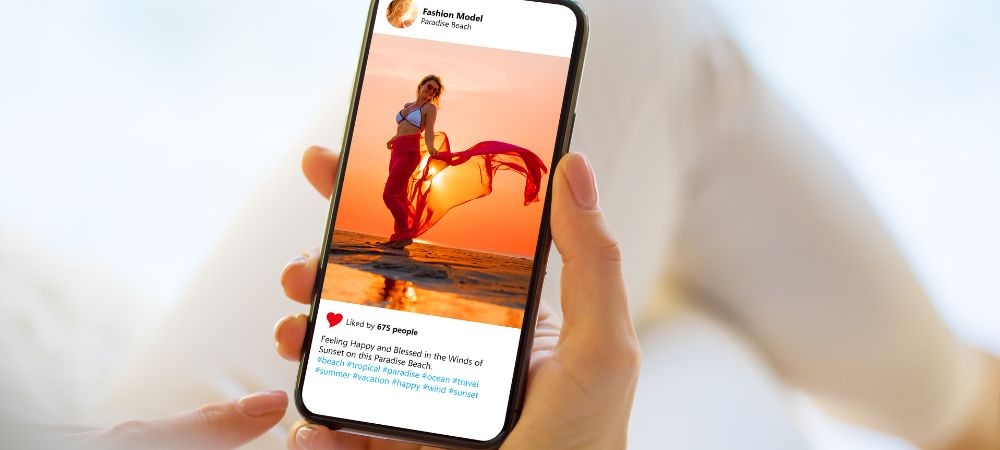

Creating video content for social media ain't as simple as pointing a camera and pressing record. There's more to it than that if you want your videos to stand out in the chaotic digital landscape. The key components of effective video content for social media platforms are crucial, and understanding them can make or break your online presence.
First off, let's talk about storytelling. You can't just throw random clips together and expect folks to care. Get access to more information browse through that. A good story engages the audience from start to finish, making them want to stick around and see what happens next. It doesn't have to be a blockbuster movie plot; even a snippet of everyday life with a compelling twist can hook viewers. Remember, people crave connection and authenticity.
Now, don't underestimate the power of visuals! High-quality images are essential, but you don't need fancy equipment to achieve that. Nowadays, smartphones have pretty decent cameras that can do the job just fine. Just make sure your lighting is adequate because nobody wants to squint at dark or overly bright scenes.
Oh, let's not forget sound quality! Bad audio can ruin even the best visuals. Invest in a good microphone or ensure you're filming in an environment where background noise isn't going to dominate your soundtrack. And please-avoid overloading your video with loud music or annoying sound effects unless they're adding real value.
Another thing that's vital is knowing your audience and platform-specific quirks. Not all social media sites are created equal-what works on Instagram might not fly on TikTok or YouTube. Tailor your content accordingly by understanding what kind of formats perform best on each platform.
Consistency matters too! Posting one viral video doesn't mean you've made it big time yet; maintaining a steady stream of engaging content will help keep your audience interested over time. But hey, don't burn yourself out trying to post every single day if it's compromising quality.
Oh boy, captions and subtitles-never neglect these little guys! Many people watch videos without sound nowadays (thanks auto-play), so having text ensures they still get the message even with the volume turned down low.
And last but certainly not least – call-to-action (CTA). Whether it's asking viewers to like, share, comment or subscribe-you gotta guide them on what steps they should take next after watching your awesome video content.
In conclusion (not meant for repetition!), creating effective video content for social media involves much more than meets the eye: storytelling prowess coupled with great visuals & sound quality while keeping audience preferences and platform peculiarities in mind-all wrapped up consistently alongwith clear CTAs-makes up winning formulae!
So go ahead folks...start shooting those fantastic vids today---you've got this!!
When it comes to high-quality video production, tools and software play a crucial role. Nowadays, creating professional content isn't just about having an expensive camera or lighting setup (though those help!). It's really about how you use the resources available to you, and boy, there are quite a lot of 'em.
First off, let's talk cameras. You don't need to spend thousands of dollars on the latest equipment. Sure, high-end DSLRs and mirrorless cameras have their perks – like better sensors and more manual controls – but even smartphones today can shoot stunning videos if used correctly. Remember those viral clips that look so crisp? Half of them were probably shot on phones!
Now, once you've got your raw footage, it's time for editing – where the magic truly happens! Software like Adobe Premiere Pro is kinda like the king in this realm. It's packed with features that let you tweak everything from color correction to sound editing. But hey, not everyone's got deep pockets or wants to deal with its steep learning curve. That's where alternatives like DaVinci Resolve come into play; it's free (for the basic version) and incredibly powerful.
For those who think video editing is rocket science, fear not! There are simpler options out there too. iMovie for Mac users or Windows Movie Maker might not offer all the bells and whistles but they get the job done without making your head spin.
Let's not forget about audio - because bad sound can ruin great visuals faster than you can say "action!". Tools like Audacity or Adobe Audition help clean up background noise and make sure every word is crystal clear. Don't underestimate good audio quality; it's half the experience!
And oh boy, animations and special effects are whole different ball game! If you're looking to add some pizzazz to your videos with cool graphics or transitions then softwares like After Effects or Blender might be what you need. They're complex but incredibly rewarding once you get a hang of them.
But wait – there's more! Collaboration tools have also become essential especially if you're working remotely with others on a project. Platforms like Frame.io allow team members to review clips together online in real-time which saves tons of back-and-forth emails.
Lastly - don't overlook stock footage libraries such as Shutterstock or Videvo when you need specific shots that weren't feasible during filming sessions due budget/time constraints.. they come handy!
To sum up: High-quality video production ain't just about one thing; it involves juggling various tools & softwares efficiently while keeping creativity alive throughout process!.
Instagram, acquired by Facebook in 2012 for about $1 billion, now generates over $20 billion each year in advertising earnings, highlighting its massive effect on electronic advertising and marketing.
LinkedIn, established in 2003 as a specialist networking website, has more than 740 million registered members from around the globe, making it a important device for job development and professional networking.
YouTube, established in 2005 and later gotten by Google, is the 2nd most gone to website after Google itself and is taken into consideration the premier platform for on-line video clip intake.
The #MeToo motion, which began in 2017, showcases the power of social media sites in driving international activities and bringing attention to social concerns.
Transforming your social media presence in just 30 days might sound like quite the feat, but with the right strategies and insights, it's not impossible.. One of the most crucial steps in this journey is to adjust strategies based on data insights.

Posted by on 2024-07-14
These days, everyone's on social media, trying to get their content seen and shared.. But it's not as simple as just posting a picture or a status update.

Posted by on 2024-07-14
In the fast-paced world of social media, building a loyal following and boosting your brand instantly is no walk in the park.. It requires dedication, creativity, and most importantly, staying updated on trends.

Posted by on 2024-07-14
In today's fast-paced digital world, video production has become a crucial part of any marketing strategy. But let's face it, not all social media channels are created equal. Each platform has its own quirks and preferences, making it essential to optimize your videos accordingly. So, how do you go about doing that? Well, I've got a few strategies up my sleeve that might just help.
First off, you can't ignore the differences in video length requirements across platforms. Instagram Stories and TikTok thrive on short-form content-15 seconds to a minute, tops! On the other hand, YouTube is where people go for longer, more in-depth videos. If you're trying to post the same video everywhere without tweaking its length, you're not gonna get the results you want.
Oh boy, captions! Don't even get me started on captions. They're super important because many folks watch videos with the sound off-especially on Facebook and LinkedIn. Always add subtitles or text overlays so that your message isn't lost when someone's watching silently. It's like trying to talk to someone who can't hear you; pretty pointless without some sort of visual aid.
Another thing: aspect ratios matter more than you'd think! Instagram prefers square (1:1) or vertical (4:5) formats while YouTube sticks to good old 16:9 widescreen. If you don't adjust your video's aspect ratio for each platform, you'll end up with awkward cropping or black bars around your content-and that's definitely not what you want!
Don't forget about thumbnails either-they're like the cover of a book for your video. A compelling thumbnail can make all the difference in whether someone clicks on your video or scrolls past it. Customize those thumbnails based on what works best on each platform; trust me, it's worth the extra effort.
Let's also talk engagement features-these vary from platform to platform too! Instagram Stories have polls and questions stickers which are great for interaction but useless elsewhere since they don't exist outside of IG Stories realm yet... By leveraging these unique features appropriately per channel helps boost user engagement significantly.
Lastly-and this one's huge-you've gotta pay attention to analytics! Each social media site offers different metrics for measuring success whether its view counts ,watch time ,or click-through rates . Keeping tabs on these numbers will give ya valuable insights into what's working & what's not allowing adjustments along way ensuring maximum impact every single time .
So there ya have it folks-a few solid strategies for optimizing videos across different social media channels . Remember ,what works well one place may totally flop somewhere else so always keep experimenting till find sweet spot !

Measuring the success of video campaigns on social media, oh boy, it ain't as straightforward as one might think. When you pour your heart and soul into video production, it's only natural to wonder - is anyone even watching this? Are they engaging with it? And more importantly, is it achieving the purpose it's meant to?
First off, let's talk about views. Sure, getting a ton of views can feel great! It's like throwing a party and seeing all those people show up. But don't get too excited just yet because views alone don't tell the whole story. You could have thousands of views but if folks are clicking away after two seconds, well, that's not exactly what you'd call success now, is it?
Engagement rates are where things start to get interesting. This includes likes, comments, shares – you know, all that good stuff. If people are talking about your video or sharing it with their friends, that's a pretty solid indicator you've hit some kind of nerve. And hey – interaction means they're not just passively consuming content.
Watch time is another big one. It's simple: how long are people sticking around for? If viewers are watching your videos till the end (or at least most of them), then congratulations! That means you're keeping 'em hooked. On the flip side though if they're dropping off quickly... it's time to rethink something.
Of course we can't forget conversion rates either; especially important for businesses looking to drive sales or capture leads through their campaign. How many viewers took that next step - whether it was signing up for a newsletter or making a purchase? That's where rubber meets road in terms of actual business impact.
But let's not ignore sentiment analysis which can be quite revealing too! Analyzing comments and feedback gives insights into how audiences actually feel about your content beyond mere numbers.
It's also crucial ta remember that different platforms may require different metrics emphasis depending on goals aimed at by each specific campaign launched across varied channels like Facebook vs Instagram vs YouTube etcetera..
So yeah – there's no one-size-fits-all answer here unfortunately.. Different campaigns have different objectives hence measuring success isn't always black-and-white process requiring mix various indicators together painting clearer picture overall performance achieved ultimately!
One last thing (promise!), don't underestimate importance setting realistic goals before starting out any project as helps manage expectations better when reviewing results later down line ensuring efforts weren't completely wasted despite minor setbacks encountered along way!
In conclusion measuring success involves little bit art lotta science combined intuition gleaned from experience trial error but worth effort invested knowing fruits labor paying dividends eventually somewhere somehow!.
Engaging an audience through video content ain't as easy as it sounds. Oh no, it's not just about clicking the record button and calling it a day. There are some best practices that can really make your videos stand out, and if you follow 'em, you'll see a noticeable difference in how people react to your content.
First off, let's talk about storytelling. People don't just watch videos for pretty pictures or fancy effects-they want a story. A good story captivates viewers and keeps them glued to the screen. It's like when you're at a party and someone starts telling an interesting tale-you can't help but listen! So don't underestimate the power of narrative; weave it into your video from start to finish.
Now, authenticity is crucial too. Nobody likes watching someone who's obviously faking it or trying too hard. Be yourself! Viewers appreciate genuine personalities because they're relatable. If you mess up? Own it! Sometimes those little bloopers can actually make you more likable.
Oh, and don't forget about quality-I'm not saying you need a Hollywood budget, but decent lighting and clear audio go a long way. Nothing turns off viewers faster than straining to hear muffled words or squinting at dark footage. You don't have to be Spielberg, but investing in some basic equipment will pay off big time.
Interactive elements are another great tool for engagement. Ask questions during your video or encourage comments below-it makes people feel involved rather than passive watchers. Believe me, nobody wants to feel like they're just sitting through another lecture.
And hey, keep things concise! Attention spans ain't what they used to be; most folks will click away if you're rambling on without getting to the point. Make every second count by keeping your message focused and engaging right from the get-go.
Lastly, consistency matters-a lot! Posting one amazing video won't do much if you disappear for months afterward. Regular uploads keep your audience coming back because they know there's always something new around the corner.
So there ya have it: tell compelling stories, be authentic, ensure good quality, use interactive elements, stay concise-and be consistent! Follow these best practices and you'll find that engaging audiences isn't quite as daunting as it might seem initially.

Case Studies: Successful Use of Video in Social Media Campaigns
Oh boy, where do we start with video production and social media campaigns? It's like peanut butter and jelly, they just go hand-in-hand. Really, if you're not using videos in your campaign strategies these days, you're kinda missing out on a lot. Let's dive into some case studies that show how successful use of video can truly elevate a social media campaign.
First off, let's talk about the Dollar Shave Club. Remember their "Our Blades Are F***ing Great" video? That was something else! It wasn't just a commercial-it was an experience. The humor, relatability, and straightforwardness drew people in like bees to honey. They didn't even need fancy effects; the raw authenticity did all the heavy lifting. This one viral video turned them from a startup into a household name almost overnight. Their subscriber numbers skyrocketed because viewers weren't just watching-they were sharing it too.
Another example is GoPro's user-generated content strategy. Instead of creating every single piece of content themselves, they encouraged users to share their own videos shot with GoPro cameras. It's brilliant when you think about it-people love showing off their adventures! This approach not only saved them tons of money on production costs but also created a sense of community among users. And let's face it; nothing beats word-of-mouth marketing.
Now, take Airbnb's "Don't Go There, Live There" campaign as another stellar instance. They used short films featuring real hosts and guests to tell genuine stories about unique travel experiences. These weren't your usual glossy ads; they felt more like mini-documentaries that gave you serious travel envy while showcasing the brand's core values at the same time.
But hey, it's not always sunshine and rainbows! Pepsi's infamous Kendall Jenner ad is a perfect cautionary tale here. They tried to leverage star power and current events to create buzz around their product but ended up facing severe backlash instead. It showed how crucial it is to be sensitive and well-informed about the context when creating video content for social media.
So what makes these successful uses tick? Well, first off-they're relatable or authentic (or both). People crave genuineness nowadays; slick advertising doesn't cut it anymore unless there's substance behind those glosses visuals.
Second thing-they evoke emotions whether its laughter with Dollar Shave Club or inspiration with GoPro videos - making viewers feel connected somehow which leads them back toward engaging further!
Finally-and this point can't be stressed enough-you've got know your audience inside-out before diving headfirst into producing any kind content especially videos since these tend demand higher investments compared other types posts online platforms today!
So there ya have it-a few case studies highlighting how effective thoughtful use video can bolster any given social media campaign helping brands reach heights never imagined otherwise without such powerful tool disposal ready utilize correctly course always keeping mind potential pitfalls avoid along journey success ultimately aim achieving through careful planning execution every step way possible ensuring maximum impact desired results end day sure thing right?
In conclusion (without sounding too formal), leveraging video's power isn't rocket science-it's knowing what works best who're trying connect overall goal wanting achieve via specific platform chosen promoting message across effectively manner imaginable basically boils down creativity strategic insight combined make magic happen quite literally sometimes feels magical indeed does work out favor doesn't necessarily mean failure either learnings gained invaluable moving forward next venture perhaps even better equipped tackle challenges ahead confidently knowing done successfully once nothing stopping doing again maybe even surpass expectations set initially aimed reaching first place after
The world of video production for social media is changing faster than ever, and it's not slowing down anytime soon. If you're in the game, you better keep up with those future trends or you'll be left in the dust. What's exciting is how technology's evolving to make content creation more accessible and engaging.
First off, let's talk about augmented reality (AR) and virtual reality (VR). These technologies ain't just for gamers anymore; they're becoming vital tools in video production. Imagine creating an immersive experience where your audience feels like they're right there with you! It's happening already, but it's gonna get even bigger. Brands are using AR filters on platforms like Instagram and Snapchat to engage their audience in ways that were unimaginable a few years back.
Then there's live streaming. Hasn't it become such a huge thing recently? It's not just for casual users either; companies are leveraging live streams to connect with their followers in real-time. The rawness of live content creates a sense of authenticity that pre-recorded videos can't always capture. Plus, it's interactive-viewers can comment and ask questions instantly!
Oh, and don't forget about short-form videos. Platforms like TikTok have exploded because people want quick, snappy content they can consume on the go. It ain't easy keeping things concise while still being entertaining or informative, but that's where creativity comes into play.
Artificial Intelligence (AI) is another trend we can't ignore. AI-powered tools can now edit videos almost automatically, making the process quicker and less tedious. Who would've thought editing could be this automated? You're able to focus more on the creative aspects rather than getting bogged down by technicalities.
User-generated content isn't new but its importance is growing exponentially. People trust other people's experiences more than polished advertisements these days. Encouraging your audience to create content related to your brand adds authenticity that's hard to beat.
It isn't all sunshine and rainbows though; with great power comes great responsibility-or however that saying goes! As video production gets easier, there's also gonna be an influx of low-quality content fighting for attention online. Standing out will require not only creativity but also strategic planning.
Lastly, sustainability is becoming a trend worth noting too. More creators are becoming conscious of their carbon footprint and opting for eco-friendly production methods wherever possible.
So yeah, if you're into video production for social media, you've got some exciting times ahead-but also some challenges! Staying updated with these trends will ensure you're not just keeping up but hopefully setting some trends yourself!
